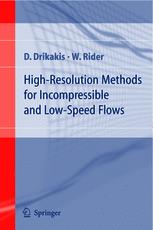

Most ebook files are in PDF format, so you can easily read them using various software such as Foxit Reader or directly on the Google Chrome browser.
Some ebook files are released by publishers in other formats such as .awz, .mobi, .epub, .fb2, etc. You may need to install specific software to read these formats on mobile/PC, such as Calibre.
Please read the tutorial at this link: https://ebookbell.com/faq
We offer FREE conversion to the popular formats you request; however, this may take some time. Therefore, right after payment, please email us, and we will try to provide the service as quickly as possible.
For some exceptional file formats or broken links (if any), please refrain from opening any disputes. Instead, email us first, and we will try to assist within a maximum of 6 hours.
EbookBell Team

4.7
26 reviewsDimitris Drikakis is Professor and Head of Fluid Mechanics and Computational Science Group at Cranfield University, United Kingdom. His research interests include computational methods, modeling of turbulent flows, unsteady aerodynamics, flow instabilities, shock waves and gas dynamics, biological flows, computational nanotechnology and nanoscience, and high performance computing.
William Rider is project and team leader in the Continuum Dynamics Group in the Computer and Computational Sciences Division of the Los Alamos National Laboratory (LANL), U.S.A. His principal interest is computational physics with an emphasis on fluid dynamics, radiation transport, turbulent mixing, shock physics, code verification, code validation and models for turbulence.
This book covers the basic techniques for simulating incompressible and low-speed flows with high fidelity in conjunction with high-resolution methods. This includes techniques for steady and unsteady flows with high-order time integration and multigrid methods, as well as specific issues associated with interfacial and turbulent flows. The book is addressed to a broad readership, including engineers and scientists concerned with the development or application of computational methods for fluid flow problems in: Mechanical, Aerospace, Civil and Chemical Engineering, Biological Flows, Atmospheric and Oceanographic Applications as well as other Environmental disciplines. It can be used for teaching postgraduate courses on Computational Fluid Dynamics and Numerical Methods in Engineering and Applied Mathematics, and can also be used as a complementary textbook in undergraduate CFD courses.